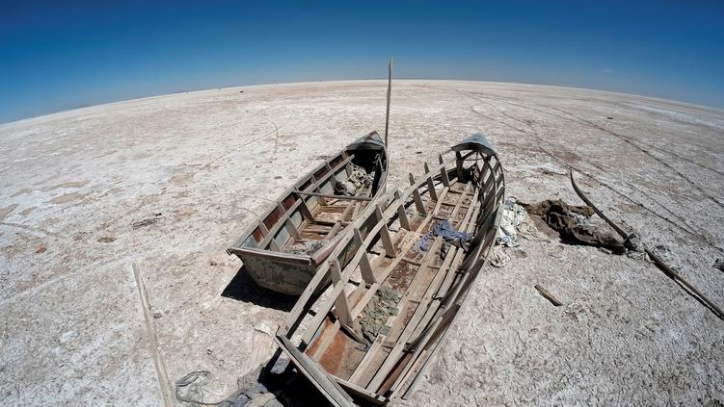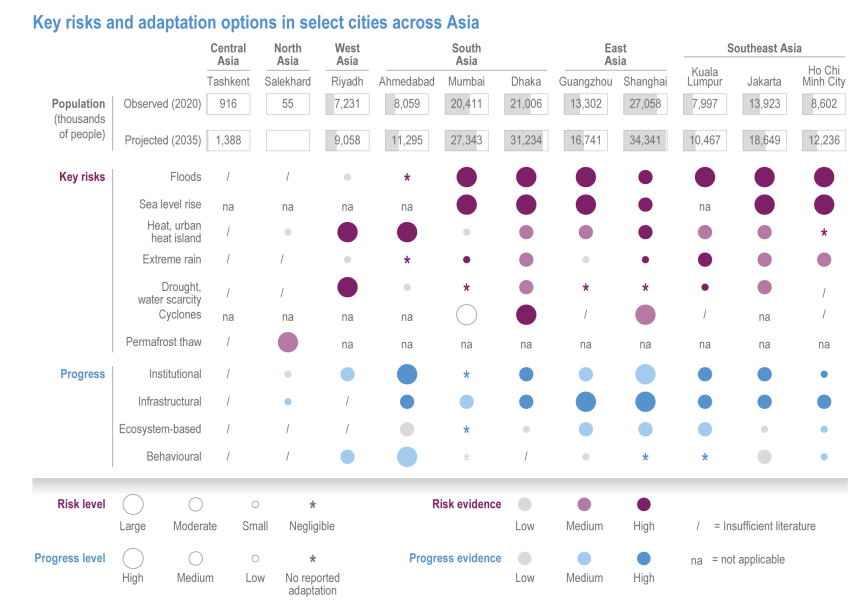
The world's leading climate scientists have warned that inadequate adaptation efforts in regions facing the serious impact of climate change along with over exploitation of natural resources, rapid urbanization and social inequalities will have a devastating effect on 3.6 billion people and nature.
In a report by the UN Intergovernmental Panel on Climate Change (IPCC) issued on Monday, researchers said merely controlling greenhouse emissions is not enough to deal with the impact of climate change. Governments also need to implement strong adaptation projects in climate-vulnerable regions.
"So far, progress on adaptation is uneven and there are increasing gaps between action taken and what is needed to deal with the increasing risks," the report stated. Today, more than 3.3 to 3.6 billion people live in climate-vulnerable areas, it added.
According to the report, a rise in global temperature by 1.5 degrees Celsius has already led to a substantial near-term increase in sea level, triggering extreme weather events, such as wildfires, floods and droughts, causing significant financial damage and substantial biodiversity loss.
As a consequence, there will be increased food and water insecurity, particularly in Africa, Asia, Central and South America, on small islands and in the Arctic. Human mortality from floods, droughts and storms was 15 times higher in highly climate-vulnerable regions compared to regions with very low vulnerability from 2010 to 2020, said the report.
"This report is a dire warning about the consequences of inaction,” said Hoesung Lee, chair of the IPCC. “It shows that climate change is a grave and mounting threat to our well-being and a healthy planet. Our actions today will shape how people adapt and nature responds to increasing climate risks.”
Near, mid and long-term scenarios of climate change
The report, titled Climate Change 2022: Impacts, Adaptation and Vulnerability, is the second of the three assessments released by the IPCC and takes into account the near, mid and long-term impact of climate change on people and nature.
In the mid and long-term (2041-2100), if global warming reaches 2 degrees Celsius, snowmelt water availability for irrigation will reduce by 20 percent. As a result, researchers also projected an increase in direct flood damages getting higher by 1.4 to 2 times at 2 degrees Celsius and 2.5 to 3.9 times at 3 degrees Celsius compared to 1.5 degrees Celsius of global warming.

Asian cities are at high risk of extreme climate events, including sea-level rise, flooding and droughts. /IPCC Graphics
Asian cities are at high risk of extreme climate events, including sea-level rise, flooding and droughts. /IPCC Graphics
Equally vulnerable to climate change will be low-lying cities, which will witness a massive population boom in the coming decades. The report warned that the population potentially exposed to a 100-year coastal flood is projected to increase by about 20 percent if the sea level rises by 0.15 m. The exposed population will double if the sea level rises by 0.75 m and triples at 1.4 m without population change and additional adaptation.
More investment in adaptive measures
The report categorizes five Asian cities, Mumbai, Dhaka, Guangzhou, Jakarta and Ho Chi Minh, at high risk of sea-level rise. Institutional, infrastructural, behavioral and eco-system-based adaptation measures made by these cities show a varying preparedness levels.
"Together, growing urbanization and climate change create complex risks, especially for those cities that already experience poorly planned urban growth, high levels of poverty and unemployment, and a lack of basic services,” Debra Roberts, IPCC Working Group II co-chair, said.
"But cities also provide opportunities for climate action – green buildings, reliable supplies of clean water and renewable energy, and sustainable transport systems that connect urban and rural areas can all lead to a more inclusive, fairer society,” Roberts added.
Scientists have suggested protecting and restoring ecosystems essential for maintaining and enhancing the biosphere's resilience, especially those damaged by wildfires, droughts and floods,
"By restoring degraded ecosystems and effectively and equitably conserving 30 to 50 percent of Earth's land, freshwater and ocean habitats, society can benefit from nature's capacity to absorb and store carbon," said IPCC Working Group II co-chair Hans-Otto Pörtner.
"We can accelerate progress towards sustainable development, but adequate finance and political support are essential,” Pörtner added.
Climate Resilient Development has already become challenging at the current levels of warming. "It will become more limited if global warming exceeds 1.5 degrees Celsius. In some regions, it will be impossible if global warming exceeds 2 degrees Celsius," the report warned.
"With swift action, we can limit their frequency and severity and help people and ecosystems to adapt to some impacts. Nature can be our ally and a crucial buffer, if we choose to restore and protect it," said Dr Stephen Cornelius, WWF global lead for IPCC.
"World leaders must heed the warnings in this report and deliver on their climate promises with increased investment to build resilience, while slashing emissions to give adaptation a fighting chance.”
(Cover: Boats are seen on the dried lake Poopo affected by climate change, in the Oruro Department, Bolivia, September 1, 2017. /Reuters)

